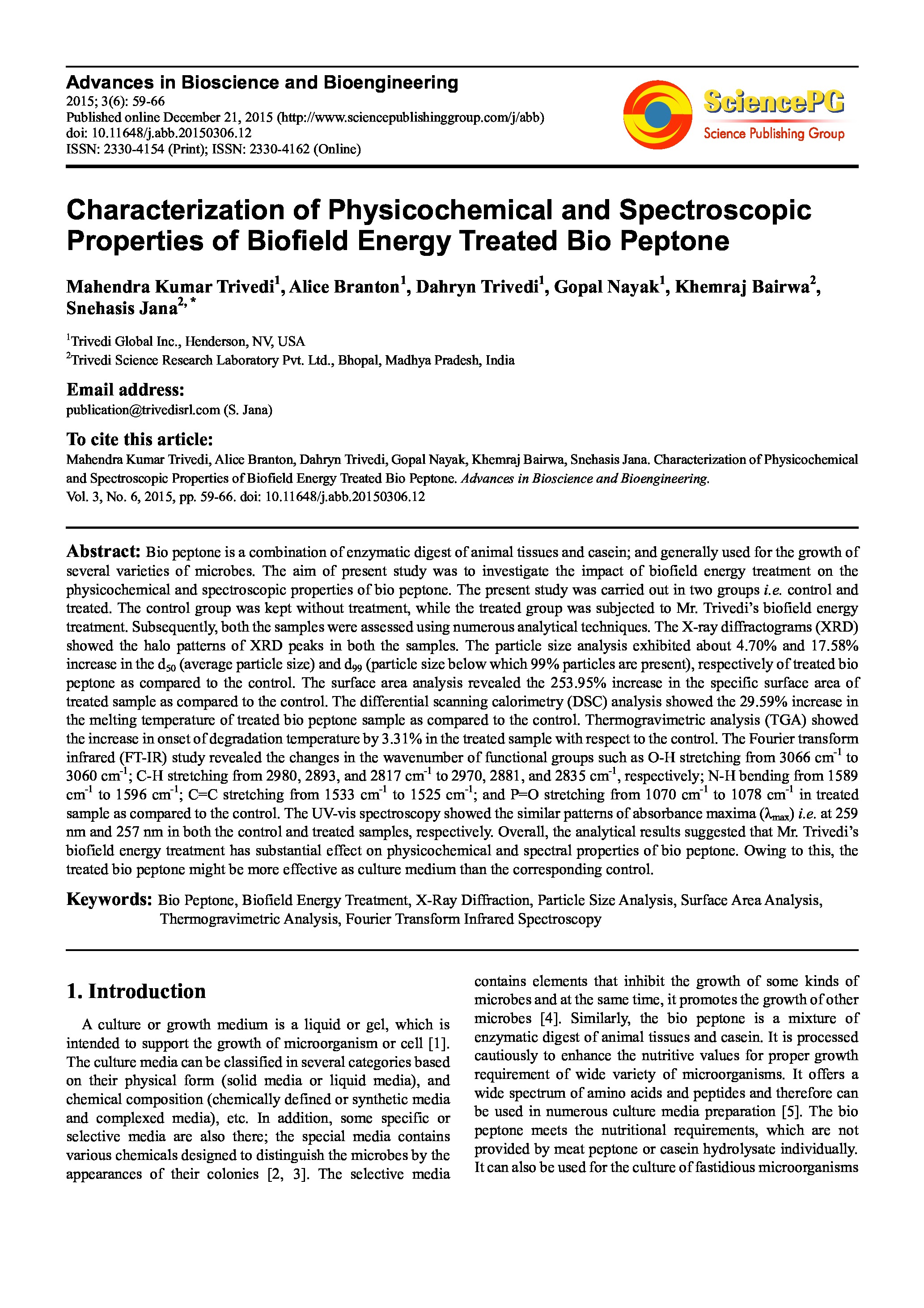Characterization of Physicochemical and Spectroscopic Properties of Biofield Energy Treated Bio Peptone
Affiliation
Trivedi Global Inc.; Trivedi Science Research Laboratory Pvt. Ltd.
Main category
Natural Sciences (Biology)
Abstract
Bio peptone is a combination of enzymatic digest of animal tissues and casein; and generally used for the growth of several varieties of microbes. The aim of present study was to investigate the impact of biofield energy treatment on the physicochemical and spectroscopic properties of bio peptone. The present study was carried out in two groups i.e. control and treated. The control group was kept without treatment, while the treated group was subjected to Mr. Trivedi’s biofield energy treatment. Subsequently, both the samples were assessed using numerous analytical techniques. The X-ray diffractograms (XRD) showed the halo patterns of XRD peaks in both the samples. The particle size analysis exhibited about 4.70% and 17.58% increase in the d50 (average particle size) and d99 (particle size below which 99% particles are present), respectively of treated bio peptone as compared to the control. The surface area analysis revealed the 253.95% increase in the specific surface area of treated sample as compared to the control. The differential scanning calorimetry (DSC) analysis showed the 29.59% increase in the melting temperature of treated bio peptone sample as compared to the control. Thermogravimetric analysis (TGA) showed the increase in onset of degradation temperature by 3.31% in the treated sample with respect to the control. The Fourier transform infrared (FT-IR) study revealed the changes in the wavenumber of functional groups such as O-H stretching from 3066 cm-1 to 3060 cm-1; C-H stretching from 2980, 2893, and 2817 cm-1 to 2970, 2881, and 2835 cm-1, respectively; N-H bending from 1589 cm-1 to 1596 cm-1; C=C stretching from 1533 cm-1 to 1525 cm-1; and P=O stretching from 1070 cm-1 to 1078 cm-1 in treated sample as compared to the control. The UV-vis spectroscopy showed the similar patterns of absorbance maxima (λmax) i.e. at 259 nm and 257 nm in both the control and treated samples, respectively. Overall, the analytical results suggested that Mr. Trivedi’s biofield energy treatment has substantial effect on physicochemical and spectral properties of bio peptone. Owing to this, the treated bio peptone might be more effective as culture medium than the corresponding control.
DOI
10.18147/smn.2017/paper:618
Do you have problems viewing the pdf-file? Download paper
here
If the paper contains inappropriate content, please
report the paper. You will be redirected to the landing page.
